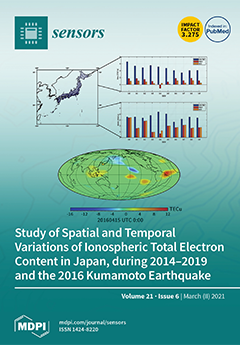Open AccessCommunication
Using the Negative Soil Adjustment Factor of Soil Adjusted Vegetation Index (SAVI) to Resist Saturation Effects and Estimate Leaf Area Index (LAI) in Dense Vegetation Areas
by
Zhijun Zhen, Shengbo Chen, Tiangang Yin, Eric Chavanon, Nicolas Lauret, Jordan Guilleux, Michael Henke, Wenhan Qin, Lisai Cao, Jian Li, Peng Lu and Jean-Philippe Gastellu-Etchegorry
Cited by 61 | Viewed by 7213
Abstract
Saturation effects limit the application of vegetation indices (VIs) in dense vegetation areas. The possibility to mitigate them by adopting a negative soil adjustment factor
X is addressed. Two leaf area index (LAI) data sets are analyzed using the Google Earth Engine (GEE)
[...] Read more.
Saturation effects limit the application of vegetation indices (VIs) in dense vegetation areas. The possibility to mitigate them by adopting a negative soil adjustment factor
X is addressed. Two leaf area index (LAI) data sets are analyzed using the Google Earth Engine (GEE) for validation. The first one is derived from observations of MODerate resolution Imaging Spectroradiometer (MODIS) from 16 April 2013, to 21 October 2020, in the Apiacás area. Its corresponding VIs are calculated from a combination of Sentinel-2 and Landsat-8 surface reflectance products. The second one is a global LAI dataset with VIs calculated from Landsat-5 surface reflectance products. A linear regression model is applied to both datasets to evaluate four VIs that are commonly used to estimate LAI: normalized difference vegetation index (NDVI), soil adjusted vegetation index (SAVI), transformed SAVI (TSAVI), and enhanced vegetation index (EVI). The optimal soil adjustment factor of SAVI for LAI estimation is determined using an exhaustive search. The Dickey-Fuller test indicates that the time series of LAI data are stable with a confidence level of 99%. The linear regression results stress significant saturation effects in all VIs. Finally, the exhaustive searching results show that a negative soil adjustment factor of SAVI can mitigate the SAVIs’ saturation in the Apiacás area (i.e.,
X = −0.148 for mean LAI = 5.35), and more generally in areas with large LAI values (e.g.,
X = −0.183 for mean LAI = 6.72). Our study further confirms that the lower boundary of the soil adjustment factor can be negative and that using a negative soil adjustment factor improves the computation of time series of LAI.
Full article
►▼
Show Figures






